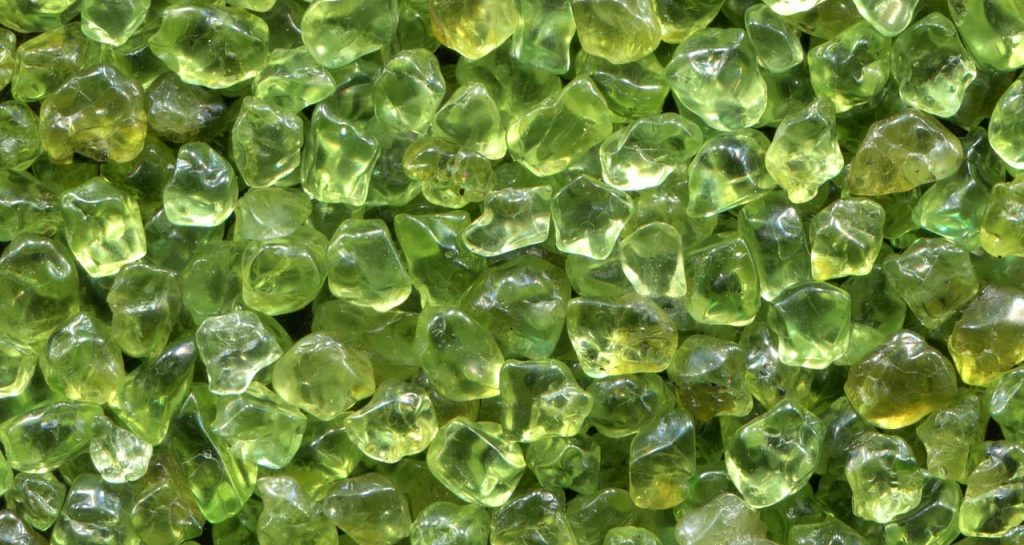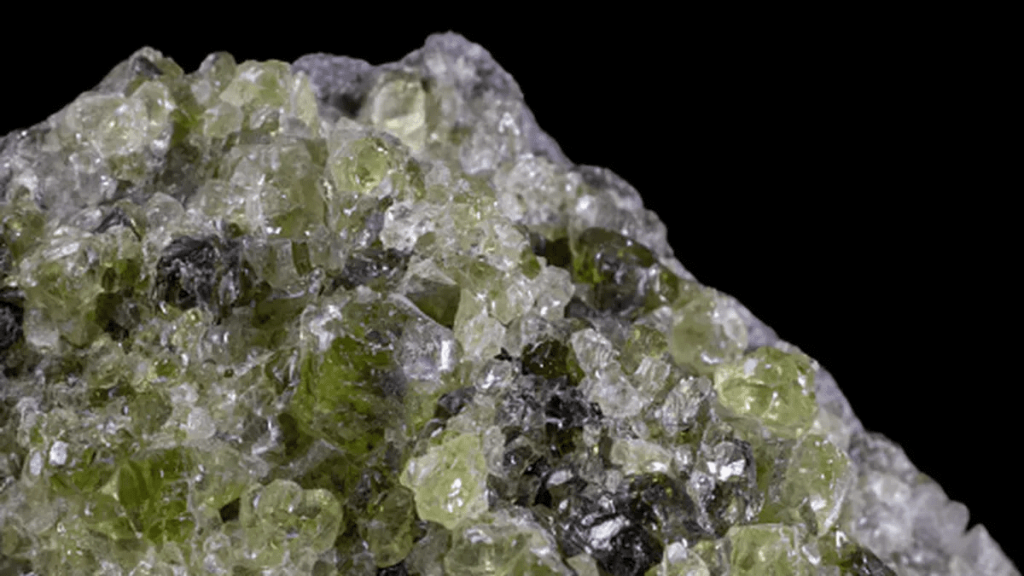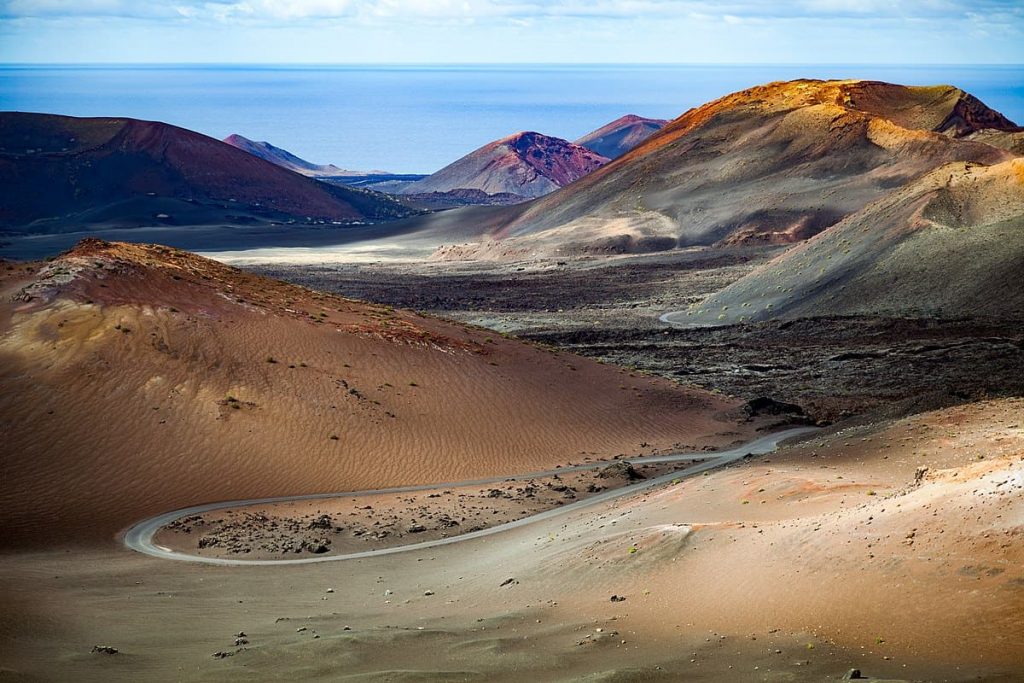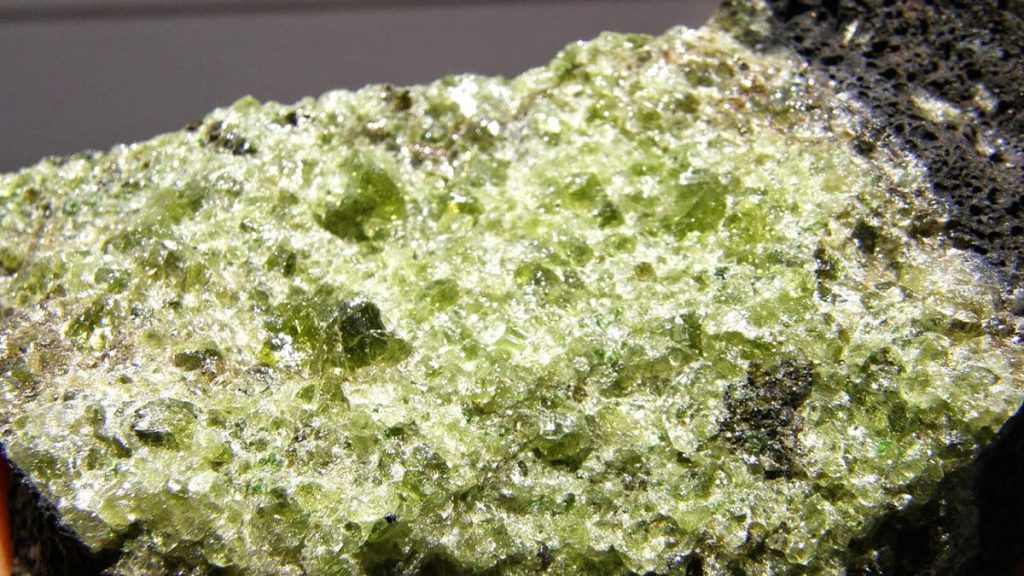Olivine is part of the main component of the earth's mantle. It is therefore present in most of the earth's crust. This mineral is composed of magnesium and iron. It belongs to the silicate group and owes its name to its characteristic greenish hue, which can vary depending on its chemical composition.

History and origin of olivine
The origin of this mineral dates back to approximately 1,500 BC, where its gem-like crystalline structure was commonly known as "peridot" and had a strong presence in the ancient civilizations of Egypt. History specialists used to relate it a lot with the jewelry of the pharaohs and kings of those times, especially with Cleopatra.
Thanks to its variety of tonalities, it used to be classified as different minerals and, depending on the culture, it could be called by different names. Its brightness represented a great advantage for the expeditionists and workers who went in search of it, since it facilitated its identification and collection. On the other hand, it was considered a precious stone and of great value in the Greek regions, since it belonged to the jewelry of royalty and its possession was quite guarded. So much so that the theft of one of these pieces was punishable by death.

In culture, mythology and religion it has a lot of presence and different meanings at the same time, it even has its own legend that relates its origin in one of the Canary Islands. Legend that we will comment below. On the other hand, it also represents the pain of the goddess of fire in Hawaiian mythology. In the Bible, it is part of the armor of Aaron, who was Moses' brother.
The legend of olivine in Lanzarote
Many years ago, when the land of Lanzarote was still hot from the fire of the volcanoes, farmers and fishermen lived together on the coast, looking for sea breeze and sustenance for their families. On the island, everyone knew Tomás the old man and his goats. An elderly farmer who lived beyond the Playas de Papagayo, in the Puerto Mulas massif. During the summer, his granddaughter Olivina, a teenager with sun-brown skin and green eyes, would spend the days with him to help him milk the goats and with the chores in the fields. The girl's head was in the clouds, but her affection and companionship made old Tomás delighted to have her with him.
One day, the Lanzarote sun was hotter than usual and old Tomás came home with a very hot face and strong tremors. Everything pointed to sunstroke and Olivina rushed to take care of him, but the old man did not improve during that night. The goats had to keep grazing or else they would also get sick from the high temperatures. Tomás had no choice but to give Olivina permission to put them out to pasture on her own. Fearful of how Olivina might lead the cattle, he warned her not to stray too far, to look for safe areas. But above all, he told her: "It is up to you to take care of the goats, don't let anything happen to any of them". With that said, Olivina got ready and did the same route her grandfather did every day, trying to be as attentive as possible.

However, after a while of grazing, Olivina began to think and get distracted by the scenery and flowers. Wanting to encourage her grandfather on his return, she thought of bringing him flowers. When she finished picking them, she counted the livestock and realized that she was missing a goat. When she looked up, she saw it lying in a gorge, unable to move. Olivina ran towards it and carefully, but firmly, grabbed one of the animal's legs, but it panicked, falling down the cliff.
Olivina was frightened and bewildered, but at that moment she was overcome with a sense of responsibility that pushed her to worry about the rest of the cattle. Her priority at that moment was to get the rest of the cattle home safely. She managed to do so, but that didn't stop her from running to the seashore where she began to cry inconsolably and then something strange happened.

Green tears of the same color began to flow from her green eyes. Green tears that the sea collected in the form of drops that were not diluted in the salt water. Observing what happened, a group of seagulls, guardians of the sky of the goddess of the volcano Timanfaya, were saddened and told the goddess what happened. Stunned by the girl's suffering, they descended from the skies to collect the little tears in their beaks. They brought them to the goddess Timanfaya, who asked to bury them in the stones of her volcano.
The magic happened when stone and tear joined together to form what we know today as Olivina. Today, tradition tells us that we should wear one of those tears in remembrance of the union between human kindness and the volcanoes of the islands.
The Canary Islands is a land with a thousand things to see, explore and learn about. If you are interested in knowing more interesting facts about the Canary Islands, its culture and traditions, we leave you below the link to the section Culture and traditions.
Paula Vera
Photos: en.wikipedia.org, Telecinco, El Mundo



